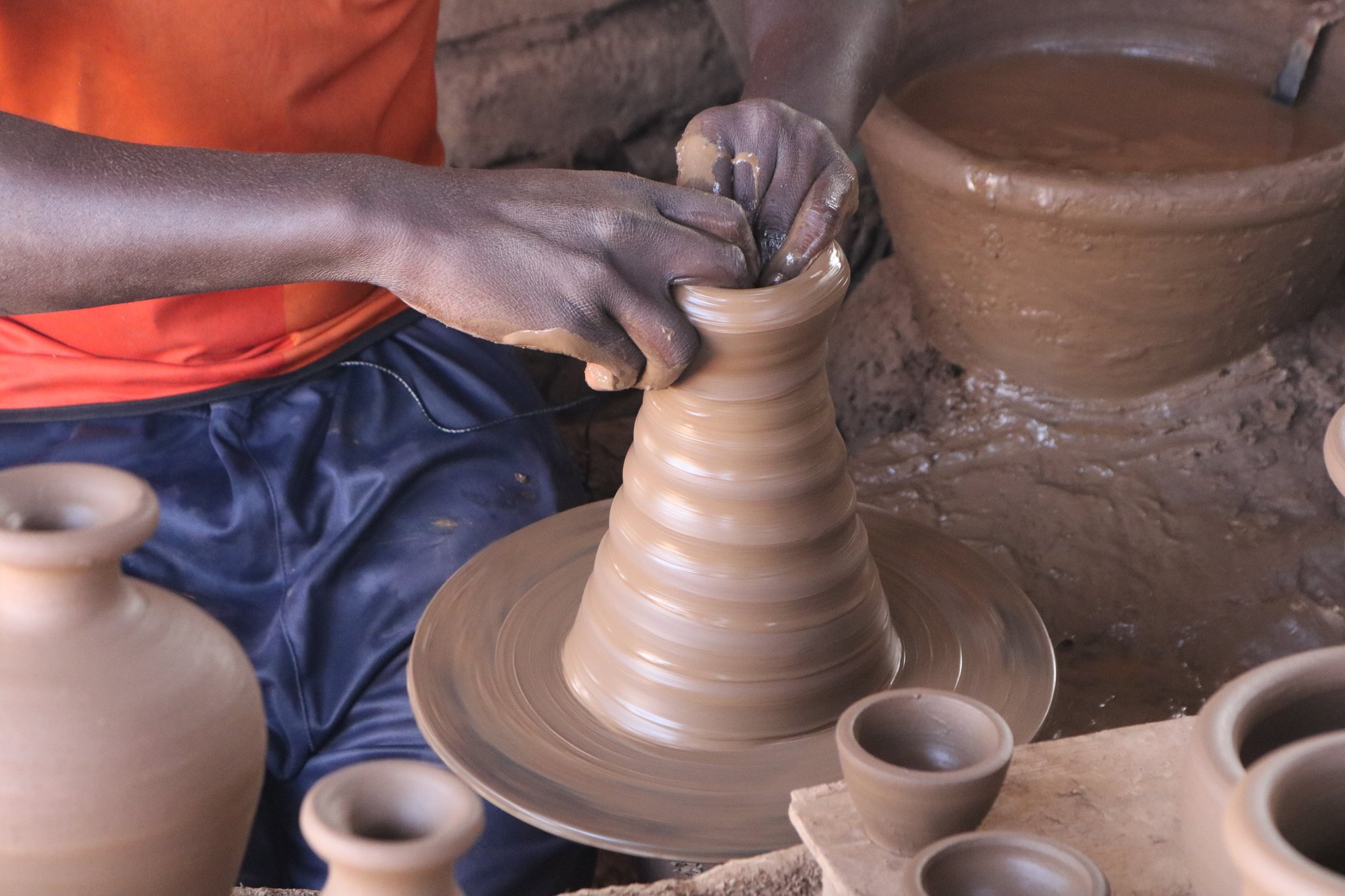(9) Sudanese Pottery -Al Fukhār
Traditional Craft, in All Sudan | Nationally recognized
Traditional craftsmanship skill by Shaping clay in different models and forms, to suit the daily needs and functions it is intended for
Pottery is a traditional craftsmanship skill. The starting material of pottery in Sudan is a special mixture of sedimentary slit and different types of earth selected in keeping with the nature and shape of the item to be constructed. Clay is shaped in different models and forms to suit the daily needs and functions it is intended for. The slit given the term Zāfūt is procured from the River Nile banks, mixed with red earth (kaolin), wetted by water and freed from foreign material before it is transferred to a different trough to dry. Next, it progresses to the compression stage in which the potter uses his bare feet to press it turning it into a homogeneous mass. Then the clay is packed in large plastic bags before it dries. The artisan takes his seat before the potter’s wheel and starts building the ware. He uses his hands to manipulate the body of clay, symmetrically pressing, squeezing and pulling it gently upward. The desired article begins to take shape progressively. He dips his hand in water every now and then and wets the mass of clay to make it more malleable to shaping. Meanwhile, the wheel keeps rotating around the potter’s skillful hands. The body of clay assumes its final design while still resting on the wheel pan. When the work is complete, the potter uses a string to detach the vessel from the wheel’s pan. The finished vessel is left in the sun to dry, though it causes some cracks in the body. Firing follows where the dry pans are placed in the kiln on top of each other from floor to ceiling taking the variations in size and shape into account. Some water is splashed inside the kiln before it is sealed by means of small pottery shards. The potter begins by lighting a small wood fire to draw out humidity from the earth ware then he carefully seals any slots using mud. He shields the kiln with a corrugated zinc sheet to control airflow. Then he lights the main fire which brings the staked vessels’ temperature to more than 900 0C. Eventually, cooked items are taken out of the kiln and showcased for customers.
Contact
assadhajam@yahoo.com

